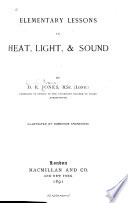 | Josiah Parsons Cooke (Jr.) - Religion and science - 1888 - 360 pages
...of rest or motion until acted on by some force external to itself. The law of Mariotte affirms that the volume of a given mass of gas is inversely proportional to its tension. The law of gravitation states that any two masses of matter attract each other with a force... | |
 | Daniel Evan Jones - Heat - 1891 - 358 pages
...one-third, and so on. By such experiments Boyle was led to discover the following law : — Boyle's Law. — The volume of a given mass of gas is inversely proportional to its pressure. In what is stated above it is supposed that the temperature of the gas is kept constant ; we now proceed... | |
 | 1891 - 718 pages
...by the efficiency of (a) a simple machine, (b) a steam-engine, including boiler and furnaces ? 4. " The volume of a given mass of gas is inversely proportional to the pressure exerted upon it." How then would you give precision to the term " coefficient of expansion,"... | |
 | Lothar Meyer - Chemistry, Physical and theoretical - 1892 - 256 pages
...explained in a satisfactory manner as arising from these several influences. According to Boyle's law, the volume of a given mass of gas is inversely proportional to the pressure upon it, and therefore the product of the pressure into the volume or the quotient of... | |
 | Richard Glazebrook - Matter - 1893 - 208 pages
...pressure of a given mass of gas at constant temperature and v its volume, then pv is a constant. Since the volume of a given mass of gas is inversely proportional to its density, it follows that the pressure is proportional to the density, and Boyle's law l is sometimes... | |
 | Richard Glazebrook - Heat - 1894 - 256 pages
...changed to p', since the product of the pressure and volume does not alter we have pv =p'v'. Again, the volume of a given mass of gas is inversely proportional to its density ; since, therefore, the volume is inversely proportional to the pressure, we see that the pressure... | |
 | Sir Richard Tetley Glazebrook - Heat - 1894 - 482 pages
...changed to p, since the product of the pressure and volume does not alter we have pv =p'v'. Again, the volume of a given mass of gas is inversely proportional to its density ; since, therefore, the volume is inversely proportional to the pressure, we see that the pressure... | |
 | Alfred Payson Gage - Physics - 1895 - 668 pages
...mass of gas whose volume is Icty-t constant is proportional to its absolute temperature. Boyle's law states that (3) at a 'constant temperature the volume of a given mass of ya# is inrersely proportional to its LAWS OF GASEOUS MASSES. 275 pressure: ie the pnxlurt of its pressure... | |
 | Richard Glazebrook, Sir Richard Tetley Glazebrook - Hydrostatics - 1895 - 682 pages
...changed to p', since the product of the pressure and volume does not alter we have pv=p'v'. Again, the volume of a given mass of gas is inversely proportional to its density; since, therefore, the volume is inversely proportional to the pressure, we see that the pressure... | |
 | Sir Richard Glazebrook - 1895 - 248 pages
...changed to p', since the product of the pressure and volume does not alter we have pv=p'v'. Again, the volume of a given mass of gas is inversely proportional to its density ; since, therefore, the volume is inversely proportional to the pressure, we see that the pressure... | |
| |